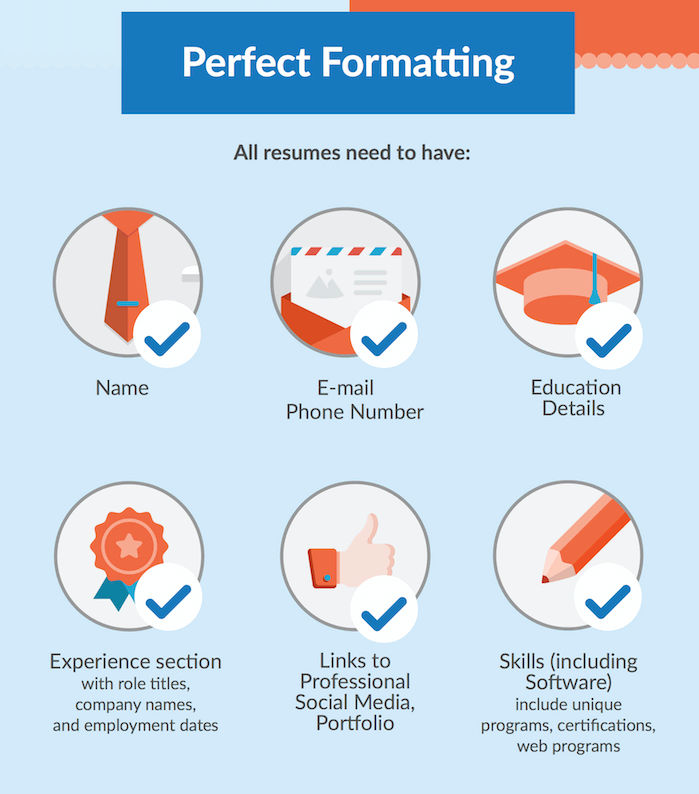Job applications don't have to be so daunting when you have spent enough time creating a resume and portfolio that put your best foot forward. Aside from obvious updates you can make to your resume, we’re here to help you shape up your existing resume and portfolio, the 2022 way!
Updates for Your Resume
1. Make sure your skills and certifications reflect the times.
Let’s face it, the past two years have pushed most of us into remote work and hybrid working situations. Use these newfound skills and certifications to your advantage! In 2022, employers want to know how flexible you are, no matter where you’re able to work. Take the time to add new experience with team-based software, like Figma, to your resume. If you took classes during the pandemic in, say, coding or improving your leadership, add those certifications along with your remote working skills. Then, during your interview, expect to flex on your remote working skills that are already visible in your resume.
2. Include statistics in your impact.
We’ve covered this before, but it bears repeating. It’s super important to celebrate and showcase your success with factual numbers that show how your work has made a positive impact. Rewrite every line around your experience to show results, not just explain your responsibilities. If you don’t currently have numbers around your team’s success, ask your network! We know that creatives don’t always receive stats but it is important to keep track of how your work has made your past companies more successful. It’s also just a great ego boost, TBH.
3. Tailor your resume to the job you want.
It seems like a no-brainer, but employers want your resume to display everything that is in the job description. If you want a good shot at your dream job, don’t send a one-size-fits-all resume. For writers, if this means going more into your SEO experience or long-form journalism, tweak some of those lines to reflect what the job at-hand requires. For those in design, tailor your experience around the specific types of design (like packaging design or UX design) or marketing channels (digital ads, social media, or web, etc.) that the job poster clearly wants to see. Show off how you are truly the right person by hitting home the needs of the job and reflecting your knowledge of the industry.
4. Pro tip? Specialize your experience.
It may seem like going niche with your skills and experience could be a career killer but in practice, it's the opposite. One of our team's favorite blogs, Creative Boom, breaks it down like this, "People focus on what they lose rather than what they gain if they go niche. It's more about having a defined angle. A niche is narrow but deep. You can get into it and enjoy working in lots of different areas." Take it from us, it's much harder to find a job for a jack of all trades designer than it is to find a gig for a UX Designer who specializes in Design Systems or a Copywriter who specializes in Advertising. Having a distinct brand around your career, especially as a creative, attracts companies and people that align with your brand and need your skills.
Updates for Your Portfolio
1. Have fun - display your personality.
While there are plenty of simple and effective changes you can make to your portfolio, the one that no one else can dictate is how you show off your personality. This is the fun part! We’ve noticed that portfolios have taken personal branding to the next level with logos, animation, bizarre type, neon colors and more! Creatives are using their portfolio to showcase unique design decisions all while sharing their work. Since your portfolio is your sandbox to play, lean into it. Besides, if the whole goal is to attract the kind of people you want to work with, you’ll find the right company this way. You’ll be more attractive to them simply because they are able to pick up what you’re putting down, creatively speaking. Need inspo? We’ve got you covered with all the top portfolio trends of 2022.
2. Use case studies to show your impact.
In more recent years, the case study has triumphed as a clear and concise way to display the kinds of impact you’ve made within teams. They are truly valuable in showing strangers what you’re capable of in just a few steps. When you’re ready to send your portfolio, you’ll be grateful you took the time to create these mini walk-throughs for the hiring manager. If you need some guidance, we have a blog article for that!
3. Have a Web version and a PDF version.
Back to having fun with creating your portfolio—choose a website platform that suits your content and your style. If it’s too hard to work with or your work just doesn’t look great, move onto a simpler platform. Or hire a friend to help! One thing that is important, though, is to have a hub (a complete website) for users to view at their leisure and then bring a PDF with you, or show, during your interview. It won’t require WIFI access (if you’re in-person) and will make a great guide for your interview, displaying all the reasons why you’re the ideal candidate for the job. In a pinch, it will be a great small-scale portfolio to have on-hand in your Google Drive, too, that you can email in a snap.
If you’d like one of our recruiters to check out your resume or portfolio and offer advice, please don’t hesitate to reach out! We can also help you find work you actually want to be doing with fun, trusted clients.


/CleanUp.jpg?width=436&height=255&name=CleanUp.jpg)

